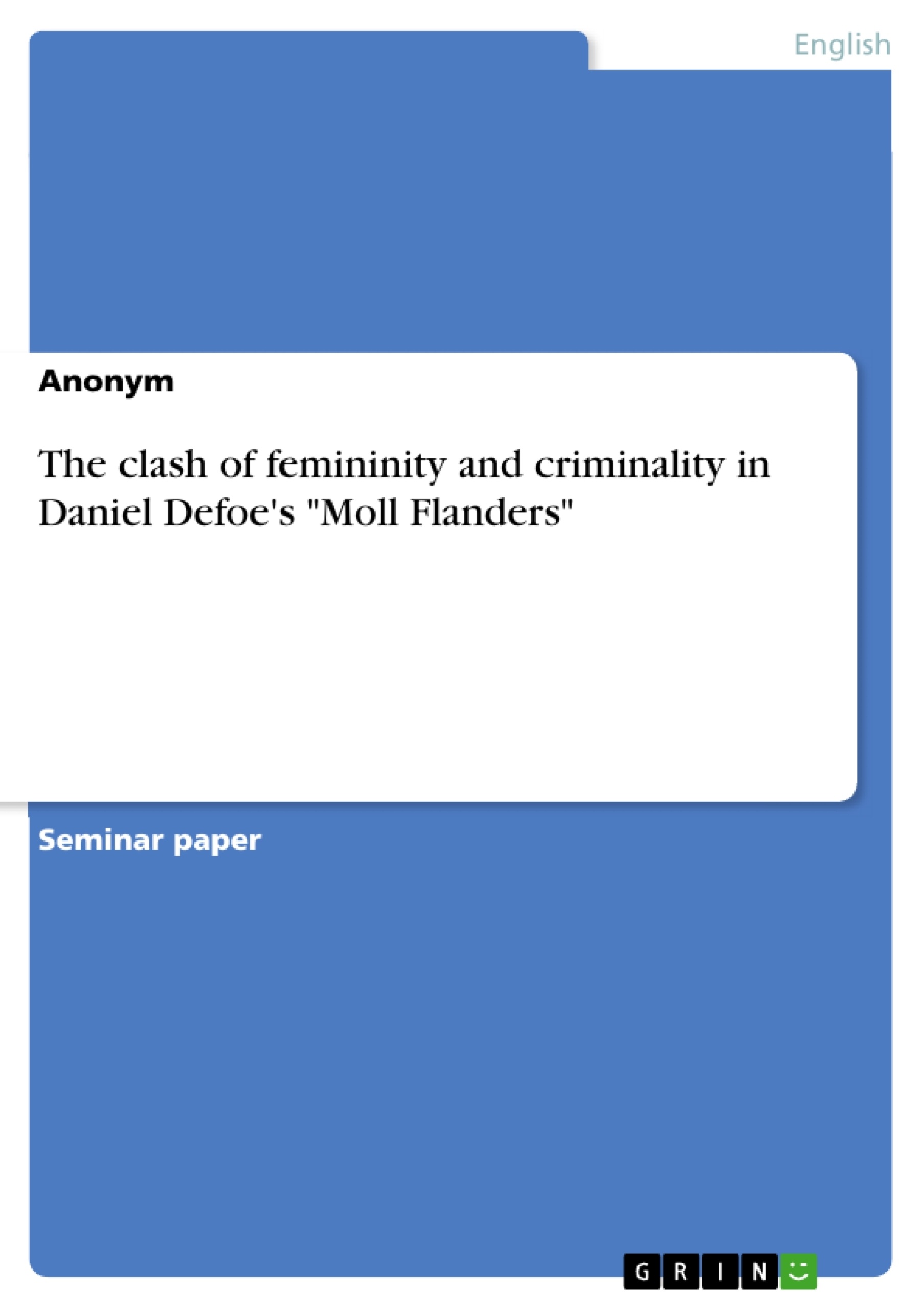The novel "Moll Flanders" written by Daniel Defoe and first published in 1722 deals with the life of Moll Flanders and her criminal career. This term paper will show the meaning of femininity and criminality in the 18th century and the clash of the two of them in the first part. The second part will take a closer look at Moll Cutpurse´s gender. An interpretation and conclusion which will discuss if Moll Flanders is female, criminal or maybe a female criminal will be the last part.
Inhaltsverzeichnis (Table of Contents)
- Introduction
- I. 1 Main statements of John Ritz on femininity and criminality
- 2. The clash of Femininity and criminality in Moll Flanders
- II. Does Smith portray Moll Cutpurse as female or criminal? & What do Moll Cutpurse and Moll Flanders have in common?
- Conclusion
- References
- Bibliography
Zielsetzung und Themenschwerpunkte (Objectives and Key Themes)
This paper explores the clash between femininity and criminality in 18th-century England, using the examples of Moll Flanders and Moll Cutpurse. It examines John Ritz's analysis of femininity and criminality, comparing his views to the portrayal of these characters in Daniel Defoe's novel "Moll Flanders" and the historical figure of Moll Cutpurse.
- The contrasting societal expectations of femininity and criminality in the 18th century.
- The character of Moll Flanders and her role as a female criminal.
- The life and character of Moll Cutpurse as a historical figure.
- The complexities of categorizing characters who defy conventional gender and social norms.
- The challenges of analyzing gender and sex in the context of 18th-century societal norms.
Zusammenfassung der Kapitel (Chapter Summaries)
- Introduction: This chapter provides an overview of the paper's topic, highlighting the changing societal roles of women in the 18th century and introducing the figures of Moll Flanders and Moll Cutpurse. It sets the context for exploring the clash between femininity and criminality in this period.
- I. 1 Main statements of John Ritz on femininity and criminality: This section focuses on John Ritz's analysis of femininity and criminality in the 18th century. It examines his arguments about the perceived incompatibility of these roles, drawing on examples like "Moll Flanders" and "The Counterfeit Lady Unveiled."
- 2. The clash of Femininity and criminality in Moll Flanders: This section examines how the character of Moll Flanders challenges traditional notions of femininity and criminality. It analyzes how her actions, especially her cross-dressing and criminal activities, place her outside accepted social categories.
- II. Does Smith portray Moll Cutpurse as female or criminal? & What do Moll Cutpurse and Moll Flanders have in common?: This chapter focuses on the figure of Moll Cutpurse, exploring her life as a historical figure and the question of her gender identity. It discusses similarities and differences between Moll Cutpurse and Moll Flanders, drawing parallels between their defiance of societal norms.
Schlüsselwörter (Keywords)
Key terms and concepts explored in this paper include femininity, criminality, gender roles, 18th-century society, Moll Flanders, Moll Cutpurse, John Ritz, Daniel Defoe, and social order.
- Quote paper
- Anonym (Author), 2013, The clash of femininity and criminality in Daniel Defoe's "Moll Flanders", Munich, GRIN Verlag, https://www.grin.com/document/370814



